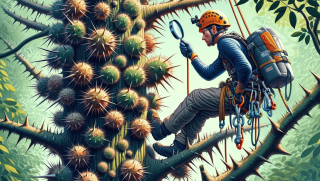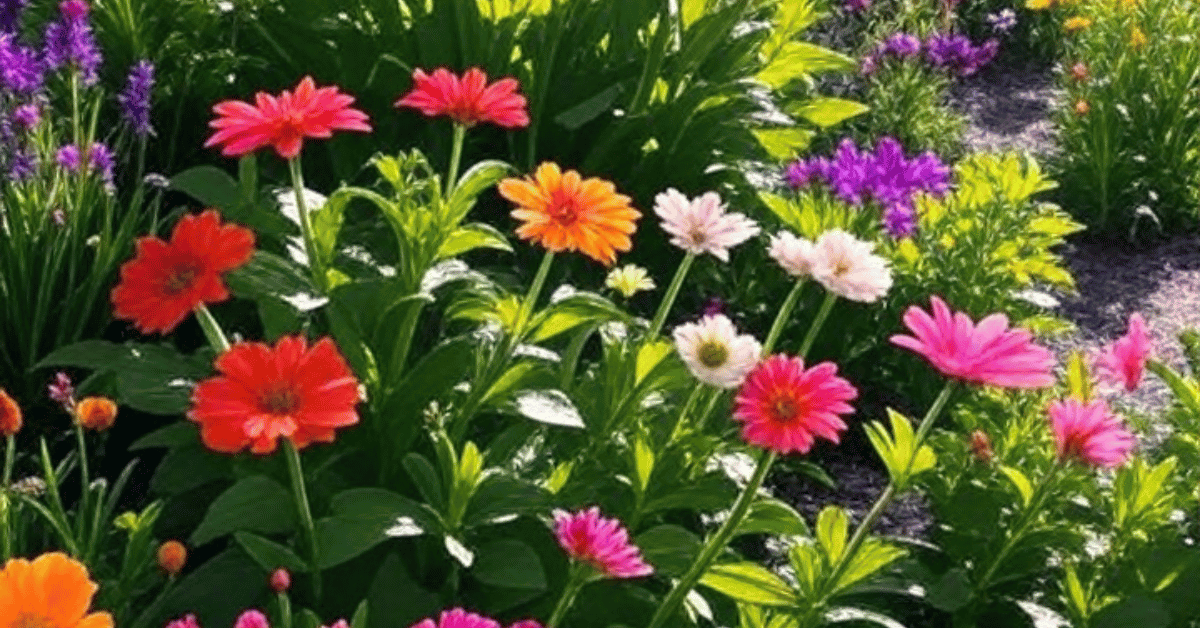When we think of trees, we often imagine lush, leafy canopies and the tranquility they bring to our landscapes. However, some trees add not just beauty and shade but also an element of surprise with their thorns. These thorny species, ranging from the formidable Acacia to the vibrant Bougainvillea, play unique roles in their ecosystems and landscapes.
In this article, we'll explore the intriguing world of trees with thorns, highlighting their characteristics, benefits, and how Strobert Tree Services, your expert tree care provider in Delaware, Pennsylvania, and New Jersey, can help you manage these beautiful yet challenging plants.
Why Do Trees Grow Spikes?
The primary reason trees grow thorns or spikes is for protection. Trees are susceptible to various threats in the wild, including herbivorous animals, insects, and human interference. Thorns serve as a physical barrier that deters animals from eating the tree's leaves, bark, and fruit. This mechanical defense is especially crucial for young trees and saplings, which are more vulnerable to damage and grazing.
Additionally, thorns can help protect trees from climbing animals, such as rodents and some species of insects, that may damage the tree's higher parts or spread disease. Trees with thorns ensure their survival and longevity by making it difficult or painful to climb.
14 Tree Species with Spikes or Thorns
1. Acacia
Acacias are renowned for their formidable thorns and are a common sight in the savannah landscapes of Africa. These thorns serve as a defense mechanism against herbivores. Beyond their thorns, Acacias are valued for their durable wood and the gum Arabic they produce.
2. Cockspur Hawthorn
The Cockspur Hawthorn is notable for its long, sharp thorns. It is a favorite in temperate regions for its resilience to cold climates. It blooms with white flowers in spring, followed by bright red berries that persist into winter, providing food for wildlife.
3. Honey Locust
Despite its intimidating thorns, the Honey Locust is prevalent in urban landscapes due to its elegant, feathery foliage and tolerance to poor soils and drought. Its thorns, which can reach impressive lengths, once served as natural fencing in rural areas.
4. Osage Orange
The Osage Orange is famed for its dense, thorny branches and the unique, green fruit it produces. Historically, it was planted as a living fence in agricultural fields, its thorns deterring livestock from straying.
5. Sweet Acacia
The Sweet Acacia captivates with its fragrant, golden-yellow flowers, which bloom against dark, thorny branches. It's a versatile tree that thrives in arid conditions and offers aesthetic and practical benefits.
6. Smilax Rotundifolia
Although not a tree by strict definition, Smilax Rotundifolia, or common greenbrier, is a thorny vine that often climbs trees, adding a layer of complexity and defense to the forest undergrowth.
7. Vachellia Rigidula
This species, known for its stiff, thorny branches, is native to Texas and Mexico. It's admired for its resilience to extreme environments. It is a vital food source for local wildlife despite its formidable defenses.
8. Devil's Walkingstick
True to its name, the Devil's Walkingstick is armed with sharp thorns along its stem and leaves. This tree stands out for its dramatic appearance and the large clusters of berries it produces, which are a favorite among birds.
9. Bougainvillea
Bougainvillea is celebrated for its spectacular displays of colorful flowers and modified leaves called bracts. While its thorns may be daunting, the visual spectacle it offers makes it a popular ornamental plant worldwide.
10. Lemon
Beloved for their fragrant fruit, Lemon trees also sport thorns to protect themselves. These thorns are a small price to pay for the delight of homegrown lemons, which add zest to dishes and drinks alike.
11. Locust and Mesquite Trees
Both Locust and Mesquite trees are known for their hardiness and thorny branches. Locust trees, with their fast growth and beautiful blooms, and Mesquite trees, with their valuable wood and role in southwestern cuisines, are resilient species that thrive under harsh conditions.
12. Pyracantha
Pyracantha earns its name from its fiery red or orange berries and sharp thorns. This shrub can be trained against walls or fences, providing a stunning visual barrier that is as beautiful as it is formidable.
13. Zanthoxylum Americanum
Commonly known as the Prickly Ash, this tree's bark and thorns have been used in traditional medicine for their numbing properties. It's a fascinating plant that adds texture and a touch of wildness to the landscape.
14. Crataegus Phaenopyrum
The Washington Hawthorn is celebrated for its glossy leaves, white blossoms, and bright red berries. While less prominent than other species, its thorns remind us of its wild origins.
Benefits of Thorns: Deterrence Against Criminals and Trespassers
While the natural purpose of tree thorns is to protect against animal threats, they also offer an unexpected benefit in human-dominated environments: deterring criminals and trespassers.
Property owners may find that strategically planted thorny trees and shrubs can be a natural security system. Sharp thorns can make it uncomfortable or even hazardous for would-be intruders to navigate through or over property boundaries, thus providing an eco-friendly way to enhance security around homes, commercial properties, and private lands.
This method of using plants for security is not new; it has been employed for centuries in various cultures to fortify properties without artificial barriers. Today, it can complement modern security systems by adding an extra layer of protection that is both sustainable and harmonious with the natural landscape.
Expert Care for Thorny Trees with Strobert Tree Services
Managing thorny trees requires expertise to ensure they grow healthy while maintaining their protective benefits. Strobert Tree Services, serving Delaware, Pennsylvania, and New Jersey, offers professional tree care services tailored to the unique needs of thorny trees.
Our services include:
- Planting and Siting: Our experts can help you choose the suitable thorny trees for your property and ensure they are planted in locations where they can flourish without causing inconvenience or harm.
- Pruning and Maintenance: Regular maintenance is essential for keeping thorny trees healthy and preventing them from becoming hazards. Our skilled arborists can safely prune and care for your thorny trees, preserving their beauty and protective qualities.
- Disease and Pest Management: Like all plants, Thorny trees can be susceptible to diseases and pests. Our team is equipped to diagnose and treat any issues, ensuring your trees remain robust and effective as natural deterrents.
- Consultation and Advice: If you're considering thorny trees for your property or need advice on managing existing ones, Strobert Tree Services offers expert consultations. We recommend species selection, care, and integration into your landscape design.
Contact Strobert Tree Services
At Strobert Tree Services, we understand the importance of balancing natural beauty and security. Our team of certified arborists is dedicated to providing the highest quality tree care services, ensuring that your thorny trees contribute to a safe, beautiful, and eco-friendly property. Whether you're looking to enhance your property's security with thorny trees or need expert care for existing ones, we're here to help.











